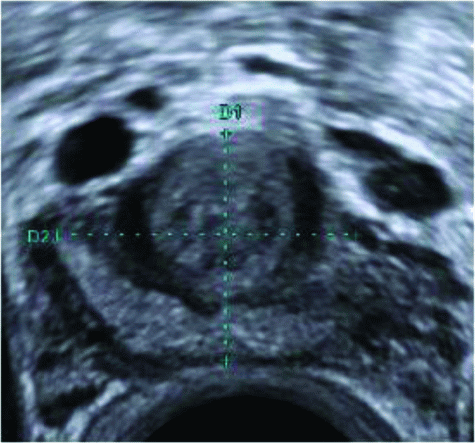BES2020 BES 2020 Fertility in men with 5-alpha reductase deficiency (1 abstracts)
Fertility in men with 5-alpha reductase deficiency
Devlies Wout 1, , Van Loon Elisabet 3 , Joniau Steven 1 , Claessens Frank 2 , Antonio Leen 4 & Vanderschueren Dirk 4
1Department of Urology, University Hospitals Leuven, Leuven, Belgium; 2Laboratory of Molecular Endocrinology, KU Leuven, Leuven, Belgium; 3Department of Nephrology, University Hospitals Leuven, Leuven, Belgium; 2Department of Endocrinology, University Hospitals Leuven, Leuven, Belgium
Introduction: 5 Alpha reductase deficiency (5-ARD) is a rare autosomal recessive disorder causing disturbance of sex development. 5 Alpha reductase is an enzyme involved in steroid metabolism, catalyzing testosterone into dihydrotestosterone (DHT), its potent form. 5-ARD therefore results in lower DHT and higher testosterone values. DHT is crucial for the differentiation of the urogenital sinus and genital tubercle into the external genitalia, urethra and prostate, while the vas deferens and seminal vesicles are testosterone dependent.1
Different virilization problems have been reported in 5-ARD patients, including clitoral-like phalluses, bifid scrotums, hypospadias, vaginal pouches and underdeveloped prostates.1–3 Puberty and masculinization of the brain are largely testosterone (rather than DHT) dependent. At puberty these patients will therefore have increasing muscle mass and deepening of their voices. Hence, it is of great importance to perform a correct gender assignment at birth.1,2
Besides impaired virilization, subfertility is common. Varying causes have been reported including cryptorchidism and abnormal prostate development with low semen volumes and impaired seminal liquefaction, which is mediated by PSA.1,2 Fertility treatments depend on the grade of impaired spermatogenesis and seminal transport. For men with normal sperm concentration and motility, spontaneous or intrauterine insemination is possible. In vitro fertilization (IVF) or intracytoplasmic sperm injection (ICSI) has been proven successful in men with small and viscous semen samples.2,4
In this case we will highlight the importance of fertility in 5-ARD patients, as well as suggest a possible diagnostic work up and further management.
Case presentation: A man in his mid-twenties presented to our outpatient clinic with a known 5-ARD since birth. He was in good health, yet presented with osteopenia. This suggests DHT to be important in bone development. He was born with a bifid scrotum, underdeveloped penis and penoscrotal hypospadias for which he received hormonal treatment and surgical correction. Afterward, no further interventions were needed and his pubertal development was normal.
He now presented with a fertility wish since 3 months. Sexual intercourse and ejaculation are possible, yet the ejection phase is impaired, with a need for manual urethral semen evacuation.
A diagnostic work up was undertaken, including blood tests, prostatic imaging, semen analysis and genetic testing. On blood tests, low DHT levels were confirmed, however with normal testosterone, LH, FSH, prolactin, estradiol and inhibin B. The latter is reflective of the Sertoli cell functioning, and therefore suggests spermatogenesis to be intact.
On prostatic ultrasound, seminal vesicles and vas deferens were normally developed. The prostate however was hypoplastic with a measured volume of only 5 grams, 4 times smaller than expected yet normal for 5-ARD patients.2,3 Figure 1

Figure 1. Hypoplastic prostate with volume of 5 gram.
0.3 ml of viscous, highly concentrated semen was retrieved for analysis, comparable to previous reports in 5-ARD patients.2 Initial motility was impaired, however, after capacitation testing, 1/3rd of sperm cells progressed, with a total motility count of 30 million cells.
Given the low volume of viscous semen but sufficient total motile count of the sperm cells after capacitation, IVF was considered suitable.
Conclusion: This case reminds us of the fertility problems associated with 5-ARD. Clinicians should be aware of the options, ranging from spontaneous/ intrauterine insemination to ICSI. Proper management of these patients is multidisciplinary, starting at birth.
Written Informed consent was given by the patient for the publication of his case and the associated images.
References: 1. Kang, H.J., et al., The effect of 5alpha-reductase-2 deficiency on human fertility. Fertil Steril, 2014. 101(2): p. 310–6.
2. Bertelloni, S., et al., Paternity in 5alpha-Reductase-2 Deficiency: Report of Two Brothers with Spontaneous or Assisted Fertility and Literature Review. Sex Dev, 2019. 13(2): p. 55–59.
3. Imperato-McGinley, J., et al., Prostate visualization studies in males homozygous and heterozygous for 5 alpha-reductase deficiency. J Clin Endocrinol Metab, 1992. 75(4): p. 1022–6.
4. Kang, H.J., et al., The first successful paternity through in vitro fertilization-intracytoplasmic sperm injection with a man homozygous for the 5alpha-reductase-2 gene mutation. Fertil Steril, 2011. 95(6): p. 2125 e5–8.
 }
}



